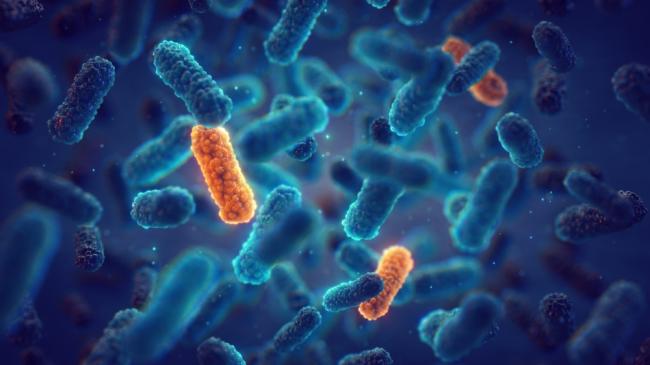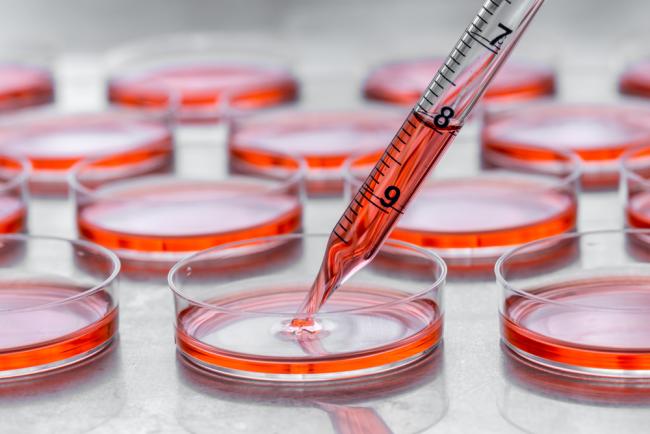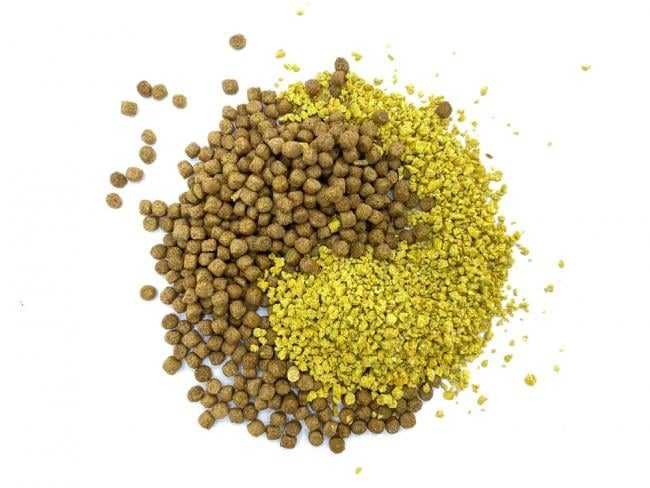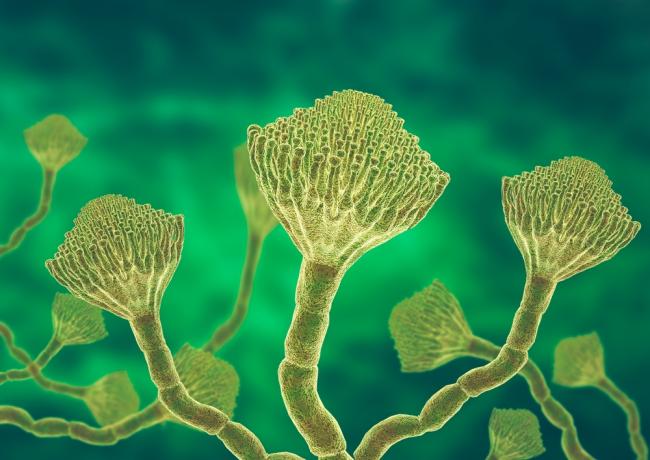Salinomycin (SAL) is a polyether ionophore antibiotic widely used in the agricultural industry, particularly in poultry and cattle farming. Salinomycin was discovered in the 1970s, and has become an essential tool in animal husbandry due to its potent antibacterial, antifungal, antiviral and antiparasitic properties1. More recently, Salinomycin has garnered attention in the medical field for its potential anti-cancer properties1.
Salinomycin, a naturally occurring antibiotic produced by the bacterium Streptomyces albus, belongs to the group of polyether ionophores, which are compounds capable of transporting ions across cellular membranes. This unique property allows Salinomycin to disrupt the ion balance within cells, making it effective against certain bacteria and parasites2.
Uses of Salinomycin:
1. Agricultural Applications
Salinomycin is primarily used in the agricultural sector as an additive in animal feed. Its main applications include:
- Anticoccidial Agent: Coccidiosis is a parasitic disease affecting the intestinal tracts of animals, especially poultry. Salinomycin is highly effective in controlling coccidia, reducing the prevalence of the disease and improving overall animal health3.
- Growth Promotion: In livestock, Salinomycin is used to enhance growth rates and feed efficiency. By controlling gut pathogens and improving nutrient absorption, animals grow faster and healthier, leading to increased productivity2.
- Antibacterial Properties: Salinomycin exhibits antibacterial activity against Gram-positive bacteria, making it useful in preventing bacterial infections in livestock. Ionophores transport ions across cell membranes of susceptible bacteria, dissipating ion gradients and uncoupling energy expenditures from growth, killing these bacteria2.
2. Medical Research
Recent studies have explored the potential of Salinomycin in the medical field, particularly in oncology. Notable uses include:
- Anti-Cancer Properties: Salinomycin has shown promising results in killing cancer stem cells (CSCs), which are responsible for tumor growth and recurrence. It has been found to be effective against various cancer types, including breast, prostate, and lung cancers3,4,5.
- Antimicrobial Agent: Although its primary use in medicine is being explored in oncology, Salinomycin's antibacterial properties suggest potential applications in treating antibiotic-resistant bacterial infections.
Mechanism of Action of Salinomycin:
Ion Transport - Salinomycin functions by forming complexes with metal cations, such as potassium and sodium ions, and facilitating their transport across cellular membranes. This disrupts the ion balance within the cells, leading to cell death2. In parasites like coccidia, this disruption is fatal, making Salinomycin an effective anticoccidial agent3.
Cancer Stem Cell Targeting - Salinomycin's anti-cancer mechanism involves the disruption of Wnt signaling pathways and the induction of apoptosis (programmed cell death) in cancer stem cells. Salinomycin was also found to act as a potent inhibitor of multidrug resistance gp1705. By targeting these resilient cells, Salinomycin can potentially prevent tumor growth recurrence and metastasis more effectively than conventional chemotherapy4.
Concerns regarding the use of Salinomycin:
1. Drug-Resistance Development
One of the significant concerns with the widespread use of Salinomycin in agriculture is the potential development of resistance. While it has proven effective, there is always a risk that overuse could lead to resistant strains of coccidia or bacteria, rendering the treatment less effective over time.
2. Residue in Food Products
Another concern is the potential residue of Salinomycin in meat and other animal products. Strict regulations and monitoring are required to ensure that residue levels remain within safe limits to protect human health.
3. Environmental Impact
The use of Salinomycin in agriculture can also have environmental implications. Residues can enter the soil and water systems through animal waste, potentially affecting non-target organisms and ecosystems.
Future Directions and Research:
1. Enhanced Understanding of Mechanisms
Ongoing research aims to further elucidate the mechanisms by which Salinomycin exerts its effects on both parasites and cancer cells. A deeper understanding could lead to improved formulations and more targeted applications.
2. Development of New Derivatives
Researchers are also exploring the development of new derivatives of Salinomycin with enhanced efficacy and reduced toxicity. These derivatives could offer more effective treatments with fewer side effects1,6.
3. Broader Medical Applications
The potential medical applications of Salinomycin extend beyond oncology. Its antimicrobial properties suggest that it could be useful in treating a variety of bacterial infections, particularly those that are resistant to conventional antibiotics.
Salinomycin is a powerful ionophore antibiotic with significant applications in both agriculture and medicine. Its ability to control coccidiosis in livestock and target cancer stem cells in medical research underscores its versatility and potential. However, the use of Salinomycin also comes with challenges, including the risk of resistance development and environmental impact. As research continues, it is crucial to balance the benefits of Salinomycin with these potential risks, ensuring its effective and sustainable use in both fields.
By understanding the multifaceted roles of Salinomycin and continuing to explore its potential, we can harness its benefits while mitigating its drawbacks, ultimately contributing to advancements in agriculture and medicine.
Fermentek offers highly pure Salinomycin in various quantities, ready for immediate delivery.
- Antoszczak M, Huczyński A. Salinomycin and its derivatives - A new class of multiple-targeted "magic bullets". Eur J Med Chem. 2019 Aug 15; 176:208-227. doi: 10.1016/j.ejmech.2019.05.031. Epub 2019 May 9. PMID: 31103901.
- Callaway TR, Edrington TS, Rychlik JL, Genovese KJ, Poole TL, Jung YS, Bischoff KM, Anderson RC, Nisbet DJ. Ionophores: their use as ruminant growth promotants and impact on food safety. Curr Issues Intest. Microbiol. 2003 Sep;4(2):43-51. PMID: 14503688.
- Zhou S, Wang F, Wong ET, Fonkem E, Hsieh TC, Wu JM, Wu E. Salinomycin: a novel anti-cancer agent with known anti-coccidial activities. Curr Med Chem. 2013;20(33):4095-101. doi: 10.2174/15672050113109990199. PMID: 23931281; PMCID: PMC4102832.
- Zhang GF, Li CX, Liu ZQ, Ma S, Chen HB. Cancer stem cell targets - a review. Eur Rev Med Pharmacol Sci. 2016 May;20(10):2045-51. PMID: 27249603.
- Riccioni R, Dupuis ML, Bernabei M, Petrucci E, Pasquini L, Mariani G, Cianfriglia M, Testa U. The cancer stem cell selective inhibitor salinomycin is a p-glycoprotein inhibitor. Blood Cells Mol Dis. 2010 Jun 15;45(1):86-92. doi: 10.1016/j.bcmd.2010.03.008. Epub 2010 May 4. PMID: 20444629.
- Huczyński A, Janczak J, Stefańska J, Antoszczak M, Brzezinski B. Synthesis and antimicrobial activity of amide derivatives of polyether antibiotic-salinomycin. Bioorg Med Chem Lett. 2012 Jul 15;22(14):4697-702. doi: 10.1016/j.bmcl.2012.05.081. Epub 2012 May 26. PMID: 22721714.





